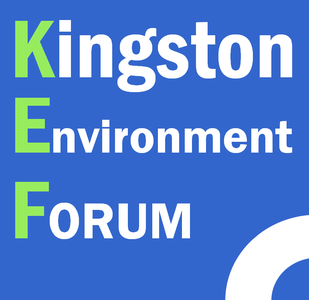KEF, and KEG before it, have liaised regularly with the Council about local biodversity issues, and member groups such as Transition Town Kingston and Kingston Biodiversity Network organise events and have contributed to Council policy on local biodiversity and management of Kingston's green spaces.
Summaries of concerns, activities and events, with links, follow, the most recent at the top.
Some useful links
Kingston
- RBK Tree Strategy, 2015 - 2021
- Bad maintenance!
- Kingston Grassland HAP
- Kingston Standing Water HAP
- RBK Good Practice Guide on Biodiversity
- Kingston Woodland HAP
- Maps of Kingston's parks and green spaces
- RBK Green Spaces Strategy
- Bat and Lighting Review by Alison Fure
- Kingston's biodiversity AP and some biodiversity checklists
General
- Thriving with Nature - a guide for everyone: Making the most of the UK's natural spaces for our mental health and wellbeing
- Plantlife's Managing Grassland Road Verges " A best practical guide for highways managers, road engineers, operations managers, landscape architects and all those engaged with verge management and creation.
- The ‘Strongest Protection’. Green Belt and Metropolitan Open Land in London: the Real Story (CPRE London report, March 2016)
- "State of Nature" report, 2015
- UK BAP priority species and habitats (DEFRA)
- Light pollution and impacts on wildlife
- Bats and Lighting at https://alisonfure.blogspot.co.uk/2017/07/bats-and-lighting.html
Kingston Biodiversity Network, formed in May 2013 is a network passionate about Kingston’s wildlife, aiming to establish strong links between organisations and people interested in conserving and preserving the biodiversity of the borough. KBN is helping to design documentation including species and habitat management plans, drawing upon local expertise and previous research, as well as carrying out their own surveys to build a picture of Kingston’s functioning ecosystems..." See KBN's statement on lighting and light pollution at https://e-voice.org.uk/kef/assets/documents/kbn-statement-on-lighting. KBN runs regular well attended meetings - see http://www.kbn.uk.com/ and KBN Facebook page.
Green is good - March 2021 Presentation to Kingston Communities Covid Recovery Task Force, Marilyn Mason, KEF
KEG concerns about biodiversity in Kingston, 2013
We met with Council Officer Marie-Claire Edwards to discuss these issues:
- Trees: specifically worries about Oak Processionary Moth, now firmly established as a pest in Richmond Park so possibly already in Kingston; and trees and hedges generally, there's been some fairly brutal hedge-cutting, and replanting has been going on by the Hogsmill (Lower Marsh Lane); ash die-back and various infestations of chestnuts might be even more of a problem in Kingston than OPM; pressure from developers to create views from new flats by chopping down trees in Canbury Gardens? Street trees - replacements? Funds?
- Mowing regimes and the relaunched Plantlife campaign on leaving long grass on verges etc - is there some way we can reduce mowing in Kingston to encourage wildlife, flowers etc (and save money)? We know wild flowers don't establish easily, but even seeding grass is good for birds etc and regular close mowing seems to us unnecessary. It seems education and signage are the keys - so how can we do that in Kingston?
- the new Kingston Biodiversity Network and its Facebook page might also be of interest - lots of interested local naturalists and nature-lovers came along to the launch meeting in May.
- Seething Wells, lack of maintenance and consequent loss of biodiversity.
“Living Landscapes – making space for nature in the urban environment”, October 2012
Do we really want wild nature in Kingston? Are we prepared to make space for it, live with its untidiness, pay for it? What’s in it for us? The Transition Town Kingston event “Living Landscapes…” explored these questions – in displays about wild flowers, bees and other pollinators from River of Flowers, local beekeepers, Kingston Environment Centre and the Environment Trust, and in a panel discussion chaired by local ecologist and TTK supporter John Fellowes. Expert panellists, Kathryn Lwin of River of Flowers, Marie-Claire Edwards (Green Spaces Service Manager, Kingston Council) and Jacqui Weir of the Royal Society for the Protection of Birds found much common ground in their concerns about declining populations of bees and other pollinators and once-common birds like the house sparrow, and shared practical and imaginative ideas about how to create, restore and maintain natural habitats in Kingston. See “Living Landscapes” for more about the project and ideas on suburban biodiversity.
